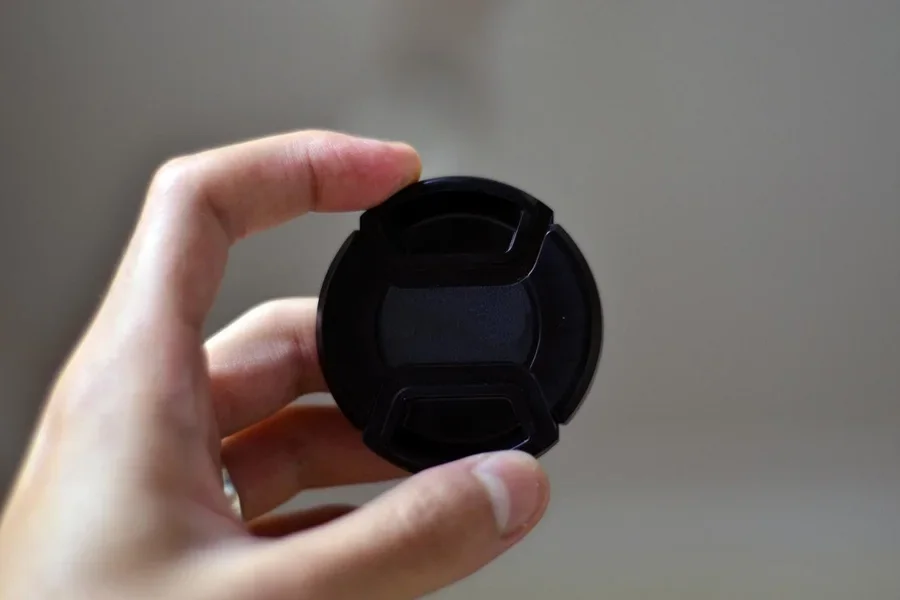Table of Contents
1. Introduction
2. Key types of lens caps and their functions
3. 2025 market overview: Trends and insights
4. Essential factors to consider when selecting lens caps
5. Leading models and brands for 2025
6. Conclusion
Introduction
Lens caps play a critical role in protecting camera lenses from dust, scratches, and potential damage when not in use. As camera technology evolves in 2025, lens caps are more varied than ever, offering tailored solutions for different types of lenses and shooting environments. Whether opting for a center-pinch or screw-on design, these accessories help ensure that lenses remain in optimal condition, prolonging their lifespan and performance. Understanding the types and materials available can enhance efficiency and protect high-value camera equipment, making lens caps essential for businesses sourcing the best protective gear for their photography products.
Key Types of Lens Caps and Their Functions

Center-pinch vs. Side-pinch caps
Center-pinch and side-pinch caps are the two most commonly used types of lens caps. Center-pinch caps, with grips located at the center, are particularly useful when a lens hood is attached because they allow for easy removal and attachment. This design provides flexibility and convenience, making it a popular choice among professionals. On the other hand, side-pinch caps, which are generally more affordable, have grips on the side. These can be harder to remove with the lens hood in place but offer basic protection for lenses in more general use cases.
Snap-on vs. screw-on designs
Snap-on lens caps are widely favored for their ease of use. They clip onto the lens quickly, making them ideal for photographers who frequently remove and replace their caps during shoots. Snap-on designs are versatile and can fit most lenses, making them a go-to option for many. Screw-on caps, in contrast, provide a more secure fit, especially useful in rugged conditions where extra protection is needed. While they take more time to attach and remove, they offer a higher level of security, making them suitable for specialized lenses.
Rear lens caps and specialty options
Rear lens caps protect the back end of the lens, which connects to the camera body, preventing dust and debris from entering. These are essential for maintaining the longevity of both the lens and camera body, especially when transporting or storing lenses separately. Specialty caps, including those designed for fisheye or vintage lenses, cater to unique needs where standard caps may not fit. These options ensure that even rare or non-standard lenses receive adequate protection when not in use.
2025 Market Overview: Trends and Insights
In 2025, the global lens cap market is set to grow at a robust compound annual growth rate (CAGR) of about 14.5% from 2024 to 2031. This increase is driven by rising demand for protective camera accessories, as more consumers and professionals adopt photography and videography equipment. The growth of advanced digital cameras and high-quality smartphone lenses has spurred a need for durable, eco-friendly lens caps that fit various lens types. According to industry analyses from ReportPrime, manufacturers are meeting this demand with versatile, sustainable designs, particularly appealing to consumers in North America and Asia-Pacific, who prioritize both sustainability and functionality in their purchases.

Demand for versatility and compatibility
Transitioning into 2025, demand for versatile, universally compatible lens caps continues to rise, building on the trends observed in 2024. Manufacturers are increasingly focused on creating lens caps that work across various brands and types, including third-party and specialized lenses. This shift reflects the needs of photographers who value flexible, simplified solutions to protect their equipment without the need for multiple brand-specific accessories. Universal lens caps have gained traction for their convenience and adaptability, addressing the growing preference for streamlined, multipurpose accessories.
Sustainability trends
Sustainability remains a priority in the lens cap market as we move into 2025, aligning with broader shifts toward eco-friendly products. Companies are increasingly adopting recyclable materials and environmentally responsible production processes to reduce their environmental impact. Efforts to cut plastic waste, incorporate circular production models, and reduce energy consumption during manufacturing are all becoming standard practices. These sustainable approaches resonate with consumers who prefer environmentally conscious products, making eco-friendly lens caps an appealing choice for the growing base of eco-aware buyers. This focus on sustainability reflects evolving consumer preferences and the industry’s response to demand for products that minimize environmental impact.
Essential Factors to Consider When Selecting Lens Caps
Size and fit
Ensuring the correct size and fit is crucial when selecting a lens cap, as it directly impacts the security of the lens protection. The lens diameter, typically indicated on the front of the lens or its side, should be measured accurately. Lens caps are available in various sizes to match specific lenses, and a secure fit prevents accidental dislodging or exposure to elements. Selecting a cap that fits snugly helps in safeguarding the lens from dust, scratches, and damage during storage or transport.
Material quality and durability

The material used in lens cap manufacturing plays a significant role in its longevity and protective capability. Common materials include plastic, metal, and reinforced composites. Plastic caps are lightweight and affordable but may not offer the same durability as metal options. Metal caps, while more robust, can add weight and are typically preferred for high-end lenses. Reinforced composites provide a balance of durability and weight, offering flexibility in protecting lenses in various conditions. The choice of material should align with the durability requirements for professional equipment and usage environments.
Brand reliability and customer reviews
Brand reputation is a vital factor in selecting lens caps, as trusted brands often ensure better quality and performance. Established companies like Canon, Nikon, and Sigma produce lens caps designed specifically for their lenses, ensuring optimal compatibility and fit. Customer reviews offer valuable insights into the durability, ease of use, and overall satisfaction with different models. High-quality caps from reputable brands typically maintain better resale value and are less likely to fail, providing long-term assurance for professionals managing significant investments in camera equipment.
Leading Models and Brands for 2025
Top manufacturers
Leading lens cap manufacturers in 2025 focus on quality, precision, and durability. They prioritize designs that fit their lenses perfectly, ensuring both security and ease of use. Their caps typically feature reliable mechanisms and materials that offer superior protection against dust and scratches. These manufacturers maintain a strong reputation for quality control and customer trust, making them a preferred choice for those who seek dependable lens caps for professional photography.

Third-party options for specialized needs
Third-party brands offer lens caps that cater to more specific needs, often filling gaps not covered by mainstream manufacturers. These brands focus on compatibility with older or niche camera models, providing customizable solutions for professionals using vintage equipment or specialized lenses. They produce caps that are adaptable to various lens sizes, giving photographers flexibility when working with a diverse range of gear.
2025’s standout models
Innovative features dominate the lens cap market in 2025, with models that emphasize convenience and rugged protection. Caps with enhanced grip designs make handling easier, particularly in fast-paced or outdoor environments. Weather-resistant caps, built with reinforced materials, are also gaining attention for their ability to protect lenses in harsh conditions. These developments respond to the increasing demand for durable, multifunctional lens protection, making them ideal for professionals requiring reliable accessories in challenging scenarios.
Conclusion
When selecting a lens cap, the key considerations are size, material, and brand reliability. Ensuring a proper fit by matching the lens diameter is essential for secure protection. Material quality—whether plastic, metal, or composite—directly impacts the durability and functionality of the cap. Trusted brands offer greater assurance of compatibility and longevity, making them a smart investment for professionals. Third-party options provide flexibility for specialized needs, while innovative designs in 2025 offer enhanced grip and weather resistance, catering to those requiring rugged, multifunctional solutions.



